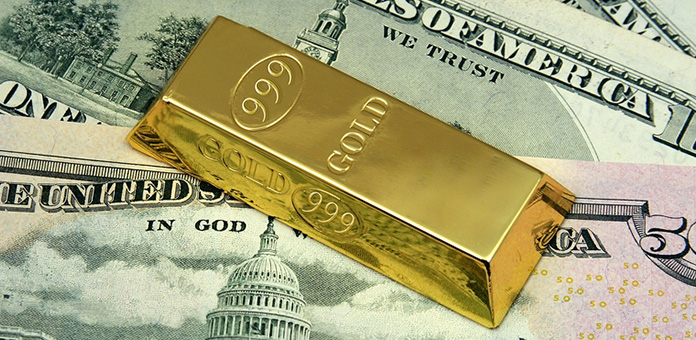
Crumbling economies, soaring debt, extremist political states—such scenarios may seem like the stuff of dystopian novels, but they are our current global reality. How did we get here? Many economists believe the downfall began when governments decided to untether economies from gold. Amid an economic climate of crisis and collapse, influential bankers, economists, and politicians are praising the idea a gold standard. Our own president has even suggested returning to a gold standard could be the answer the country’s economic problems. 1
“Bringing back the gold standard would be very hard to do, but, boy, would it be wonderful. We’d have a standard on which to base our money,” Donald Trump told an interviewer at thescene.com.
Support for the Gold Standard
Not long after the Great Recession, experts at Germany’s Deutsche Bank published an insightful report. Titled Gold: Adjusting for Zero, the study serves as a rallying point for those who believe a gold standard is the only hope for a return to global economic stability.
The report was introduced with pro-gold comments from the president of the Bundesbank (Germany’s central bank), Jens Weidmann. In his speech, entitled Money Creation and Responsibility, Weidmann proclaimed, “Indeed, the fact that central banks can create money out of thin air, so to speak, is something that many observers are likely to find surprising and strange, perhaps mystical and dreamlike, too—or even nightmarish.”
Although the U.S. has ostensibly recovered economically since the report was published, influential and informed individuals continue to echo Weidmann’s censure of fiat currencies and support for gold.
Alan Greenspan: “If we went back on the gold standard, and we adhered to the actual structure of the gold standard as it existed prior to 1913, we’d be fine.” 2
Ron Paul: “Fiat money is not good money because it can be issued without limit and therefore cannot act as a stable store of value.”
When the Gold Standard Ended
If the gold standard was such an economic boon, why did we abandon it? In 1971, the U.S. followed other world governments and ended its use of the gold standard. The expenses of World War I had pushed several European nations to suspend this finite control over spending in the early 20th century. Once fiscally unharnessed, one politician after another officially terminated the standard. Since the “Nixon Shock,” the world has been engaged in a paper money experiment never before seen in history. 3
The objective of most experiments is to try several approaches and adopt the most successful and sane course of action. Unfortunately, the fate of the majority is now shaped by the actions of the few, specifically their untested, yet risky monetary experiment. Citizens have no say in these policies; a handful of economists, government officials, and university professors dictate and implement them.
If the fiscal policy of recent decades—unfettered deficient spending—is any indication of where this grand experiment is headed, then suggestions of a return to a gold standard are more than valid.
Investing in Gold
Drastic shifts in monetary policy may be the answer to the world’s current economic troubles, but not immediately, as such macro-level changes take years to enact and implement. For now, individuals can find their own financial security by investing in gold, the ultimate hedge against inflation and portfolio diversification instrument.


